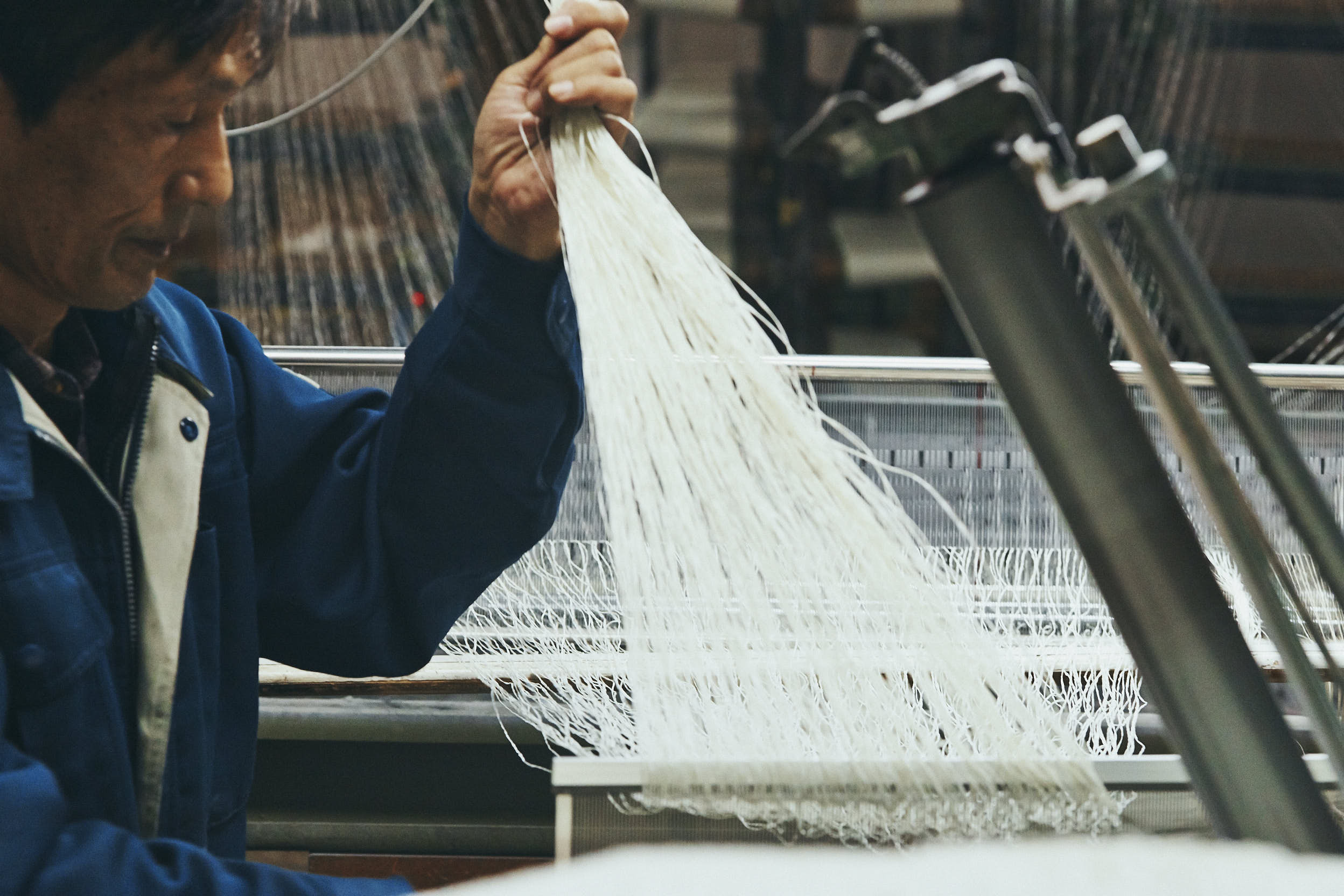Sasawashi | Weaving Traditions
“Sasawashi is a new organic textile forged by weaving together washi yarns with fibers from the Kumazasa plant.”
Concept of Sasawashi
Sasawashi was founded as an environmentally sustainable solution to counteract today’s throwaway culture. In contrast to the disposable nature of today’s textile industry as experienced first-hand by the founder, Sasawashi functions on the principles of ‘comfort, longevity and simplicity’, by bringing out the best features of natural resources. By weaving together two revered materials - Washi and Kumazasa, this innovative fusion which blends functionality with elegance forms the creative philosophy of Sasawashi.
About Japanese Washi Paper
Washi is a traditional Japanese paper that is highly durable, water-resistant and oil-absorbent. For centuries, washi paper has formed an integral part of Japanese culture and aesthetics. Its use is wide and varied - from traditional arts such as printmaking, to interior design where it is used as sliding paper doors (shoji or fusuma) and furniture in traditional Japanese homes. While paper is considered as a disposable material in many western societies, washi is revered in Japan for its durability and resilience, belying its deceptively light and thin-weight body. As a versatile material that can absorb both water and oil, washi is highly functional when turned into a fabric as it can naturally absorb various substances at once.
About Japanese Kumazasa Bamboo
Kumazasa is a type of Japanese bamboo that is revered for its natural anti-allergen, antibacterial and deodorant properties. The Kumazasa plant is mainly grown in the cold highlands of Japan where it can grow for over sixty years whilst subject to the harsh and snowy conditions. Traditionally, the leaves of the Kumazasa plant have been used to preserve foods such as Chimaki (rice dumplings), Sasa sushi and Sasa Dango (dumplings). Kumazasa is also heralded for its health benefits and it is used as a natural remedy to treat various skin conditions and promote anti-ageing. The flakes of the Kumazasa plants are blended in their natural state with washi during the paper-making process to give Sasawashi its antibacterial and deodorizing qualities.
About Sasawashi Fabric
1. PAPERMAKING
Kumazasa plant flakes are infused in the papermaking process to form a sheet of Sasawashi paper.
2. SLITTING
A sheet of Sasawashi paper is slitted into long tapes to make yarns of varying sizes and thickness.
3. TWISTING
In a similar fashion to making strings, Sasawashi tapes are twisted and woven to make yarns.
4. WEAVING
Lastly, Sasawashi yarns are machine-woven to complete the Sasawashi fabric-making process.
The Features of Sasawashi
The innovative fusion of natural materials that forms the fabric of Sasawashi emphasises the ‘power of nature’ and brings out the best features for life-long use. Kumazasa prevents unwanted odors while washi is lint-free, highly absorbent, naturally cuts UV rays and gently exfoliates without being abrasive to the skin. Sasawashi’s collection of bathroom textiles is also easy to care for and its natural power is retained even after many uses.
POINT 2 Natural Antibiotic Deodorant Effects
Sasawashi retains the antibacterial properties of the Kumazasa fibre plants by naturally absorbing moisture and unpleasant odors from the skin.
POINT 4 Washable
Sasawashi is easy to care for and is hassle-free. Simply wash the Sasawashi product by placing it in a laundry net and let it air dry after wash.
(Note: Do not tumble dry, 30 °C cold water.)
Photo Credit to Sasawashi















